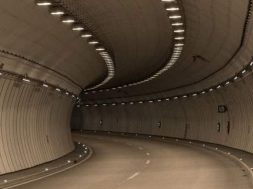Building automation: technology & trendsSeveral small enterprises and distributed commercial chains are looking into building automation systems very seriously as these are very simple, affordable, and easy to install and maintainBuilding automation technology has now become an essential element of consideration for all property owners and operators. Building automation system network architecture is becoming the standard instead of the exception. The control system is a computerised, intelligent network of electronic devices designed to monitor and control the mechanical, electronics and lighting systems in a building.Building automation integrates building systems such as lighting, security, HVAC, energy management and life safety by connecting them to a backbone with a centralised common user interface where all systems communicate with each other to maximise building efficiency.A lot has been talked and written about building automation systems or BMS (Building Management System) for large buildings. This article focuses on a different kind of buildings for automation:• Small enterprise: Buildings for small enterprises like a high retail showroom, restaurant, small office etc.• Distributed commercial: Chain of small buildings for large organisations like banks, large retail companies, beauty parlours etc.The automation needed in such buildings is different from traditional BMS one finds in large offices or malls. Small enterprises need cost-effective solutions for efficiency, energy savings, security and access control. The distributed commercial builders need uniformity of operation and need to monitor and manage the resources spread across through a central control centre.
Automation for small enterpriseThe automation for small enterprise is created around networked components for light and AC control, and networked security and access control. All of it is brought together on an automation server which performs necessary controls, optimisation and analytics centrally, and gives access to those functions to authorised users over networked clients.Building automation technology can then be applied for energy optimisation, and necessary analytics depending upon nature of building (movement of people, people counting, energy profiling etc) can be run on the automation server to provide additional information to the enterprise managers for their business efficiencies.The automation server can also be connected on cloud, which in turn can enable access of critical security information and control of lights, AC, entry to premise etc over cloud. All these things are very helpful for small offices where the critical access and control can be retained with a few people, without requiring their physical presence in the premise all the time.Automation for distributed commercialThe care-about in distributed commercial buildings is slightly different. These are typically numerous offices under a central corporate structure.There are two primary care-abouts for such office:• For a uniform customer experience across multiple offices, uniformity of operating parameters like temperature, lights etc.• For efficiency of operations, judicious use of various things like energy, diesel• For easy maintenance of facilities, centralised reporting for various parameters of the premisesFor distributed commercial building, there are four main components:• Different kind of sensors to sense and measure critical parameters like temperature, power consumption, and diesel level• Different kind of control modules to control devices in the premises such as light, AC and security• A gateway which connects all of above to cloud• A central system to aggregate information and control of all premises for monitoring, control, optimisation and analysis.The gateway is equipped with power pack to handle limited power failures. Also, care is take in the cloud interface protocol that the communication between the connect gateway and central server on the other side of cloud does not require much bandwidth. To ensure that no data is lost during either power or network outage, the connect gateway comes with its own local storage which stores all the data during those time periods, which are then sent to the central server as soon as the power and/or network is restored. The captured data is provided over Web APIs, FTP and SNMP. A Web server on the connect gateway provides mechanism to pull data on request. This is helpful where there are network outages and past data needs to be pulled by central server. A very lightweight webpages are implemented to enable quick view of sensor status, which can be viewed even on local wireless network. The gateway can also be configured to push the sensor status, which can help in optimising the network bandwidth and remove the need of constant polling from central server.The control modules for lights, AC and other appliances can enable centralised control of all the appliances, thereby ensuring that all the premises are operated in a uniform manner. All the information collected by the central server can then be analysed for various purposes and optimisations.Advantages of building automationEnergy savings BAS can save utility costs by managing HVAC and lighting systems. HVAC and lighting are the two largest consumers of energy in modern buildings and usually the first systems to be automated. BAS systems can monitor every zone of the building and make spontaneous accommodations to maintain comfort while lowering energy usage. Lighting can be reduced remotely in areas of the building that are not occupied thereby cutting energy costs.Environmental impact By reducing the energy usage of a building, a BAS also reduces the amount of greenhouse gases released into the atmosphere. A BAS can be integrated into plumbing systems to monitor and reduce water use. By eliminating waste, these systems help buildings use resources more efficiently and reduce their impact on the environment. The systems also allow third parties, like government agencies to collect data and validate the amount of energy consumed by the building.Improved security A BAS can be programmed to lock doors and turn off lights at a prescribed time. In case an employee wishes to access the building after that time, a key card will allow access and the system will turn on the lights in the area where the employee is working, but nowhere else. The system can also be programmed to control exterior lights in parking lots and security cameras. When a security breach happens, the system will notify appropriate personnel.Building maintenance An integrated BAS monitors and collects data from all the zones in the building and reports the results on the system’s computer. By reviewing the information provided by the BAS, an operator can identify and diagnose problems early without having to send a technician to locate it. Finding operational problems early and correcting them saves largely on the cost of building maintenance and prevents breakdowns which can interrupt business operations.Operator convenience Many BAS can be accessed from any location with an Internet connection; therefore, operators do not have to be on a particular location to access building data. Compounds with more than one building can integrate the systems of all the buildings onto a single front end computer which allows an operator to monitor the entire facility from a single source. Hence the automation saves money by reducing the number of employees required to provide building maintenance.As can be seen from above explanations, such systems are very simple, affordable, and easy to install and maintain. This is resulting in several small enterprises and distributed commercial chains looking into such systems very seriously. The availability of reliable, cost- effective solutions will certainly drive a large-scale adoption for these.Avinash K. Gautam, Vice President – Security and Automation,Silvan Innovation Labs
Cookie Consent
We use cookies to personalize your experience. By continuing to visit this website you agree to our Terms & Conditions, Privacy Policy and Cookie Policy.









